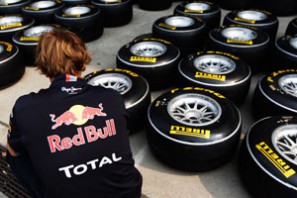'Welcome back': Reliving the last Chinese Grand Prix ahead of its much-anticipated return five years later
Five-years is a long time in motorsport, let alone the general state of the world – especially given the impact of the Covid-19 pandemic…

Sebastian Vettel is charging through the second sector in Shanghai. It’s difficult to believe that only four laps ago he was more than 14 seconds behind Hamilton. Now, on the run out of turn 10, the interval is less than one.
Distracted by traffic at turn 11, he goes too deep and loses ground – but he’s played the long game all afternoon, and isn’t about to give in now. Down the huge back straight, the gap is now just an agonising half-second.
He catapults himself out of the hairpin and barrels into the final corner. Hamilton locks up but keeps steady. The Red Bull is so close, intimidating the Silver Arrow into slowing down. The gap is shrinking. He needs only a few more metres to close the deal…
The flag waves, Hamilton prevails. They cross the line with just two-tenths of a second between them, a seemingly unconquerable margin almost obliterated by some 14.3 seconds in just a handful of laps, resulting in a thrilling final-lap battle.
The credits for the 2013 Chinese Grand Prix will thank the Red Bull strategy team, the near-flawless driving of Sebastian Vettel, and – surely – Pirelli.
Much has been said of Pirelli’s 2013 brand of rubber in the first three races of the season. Now, in the thick of round four, it is facing an internal review of its compound selection to decide whether any of the criticism is founded.
I can answer the question early: it isn’t.
Pirelli has faced criticism early in in the past two years, yet at the end of each season it finds itself being thanked by Formula One for spicing up the action. I expect much the same this year, if Pirelli can push through this difficult opening phase.
Let’s break the situation down. Pirelli entered the sport in 2011, working to a brief put forward by the teams and the FIA to create a range of tyres that would have differing longevity on track, in response to the ultra-durable Bridgestones used in 2010.
Pirelli filled this brief with huge success. Not only have the tyres been of sound quality – not a single one has failed – but the company has evolved its compounds each year to prevent teams from becoming too comfortable with each specification, and to keep engineers on their toes.
Let’s take China as an example. The soft was never used for longer than seven laps, a short amount of time – but Pirelli predicted this before the race. It stood by its selection because it also knew that if it swapped the soft for the hard, the Chinese Grand Prix would almost certainly have been a one-stop affair. Would such a race have lived up to what we saw last weekend? Definitely not.
Yet the teams and drivers continue to complain. Mark Webber and Lewis Hamilton have been particularly vocal, while Red Bull has been lobbying Pirelli to modify its compounds in time for the European season. But, like all complainants in Formula One, their motives are born of self-interest.
Webber’s native driving style is incompatible with these tyres. He likes to stand on the brakes, and push the car into corners. Likewise, Hamilton likes his car to oversteer and slide around as he positions it on an apex. Neither driver’s technique is conducive to prolonging the life of the tyre, so it’s forcing them to drive in a way they don’t like.
Red Bull, meanwhile, is upset because these tyres react negatively to the buckets of downforce produced by the RBR9. The 2013-spec rubber is negating aerodynamic gains and giving an advantage to those teams with creative suspension solutions. But that’s how Formula One works – the FIA constantly bans devices that push the envelope, forcing engineers to pursue other avenues of development.
This sport isn’t supposed to be easy. It sits at the top of the motorsport hierarchy because it presents the greatest technical challenge. The rules are fluid, constantly evolving, constantly pushing engineers to be creative in their work.
By that same token, it takes a special sort of driver to be able to adapt to driving car that can change driving philosophies in the matter of a season. Learning to cover up a hole in the monocoque with one hand, adjusting the brake bias in the middle of corners – or adapting driving style depending on the abrasiveness of the surface and the softness of the tyre – are all examples of the challenges drivers must master in the car.
Driving a Formula One car is more than just pushing to the limit each lap. It’s about management, it’s about setting and reaching targets. It’s about driving cleverly – and ‘twas ever thus, because Formula One always has, and always will, reward the most complete driver.
—
You like Twitter? I like Twitter. We could Twitter together: @MichaelLamonato